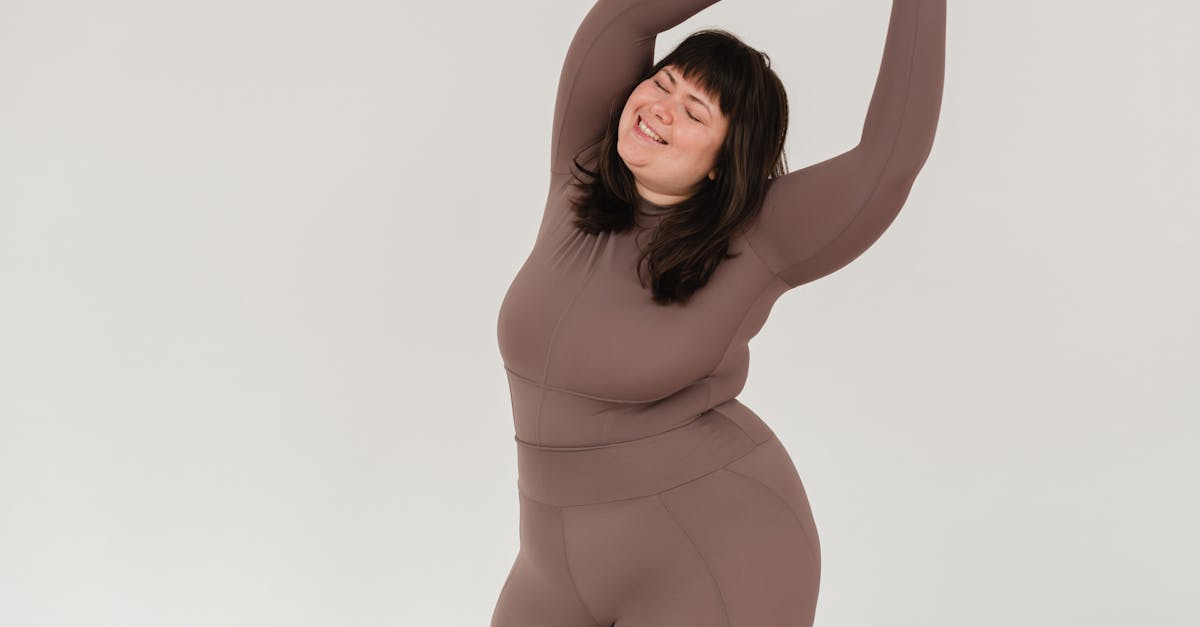Muscles in the Front of the Hip: Understanding and Strengthening for Mobility
The Gateway to Mobility

Muscles in the Front of the Hip: Understanding and Strengthening for Mobility
Hip flexors are a group of muscles located at the front of the hip that allow us to bend or flex our hips. They play a vital role in many everyday movements, such as walking, running, and climbing stairs. Strong hip flexors can help to improve posture, reduce pain, and increase mobility. In this article, we will discuss the anatomy of the hip flexors, their function, and how to strengthen them.
A Path to Enhanced Movement
Strong hip flexors are essential for good mobility. They help us to walk, run, and climb stairs. They also help to stabilize the pelvis and keep us upright. When our hip flexors are weak, we may experience pain in the hips, knees, or back. We may also have difficulty with balance and coordination.
There are a number of exercises that can be used to strengthen the hip flexors. These exercises include hip flexion with a resistance band, lunges, and mountain climbers. By performing these exercises regularly, we can improve the strength and flexibility of our hip flexors and enjoy the benefits of enhanced mobility.
1. Introduction to Hip Flexors: The Gateway to Mobility
Introduction to Hip Flexors: The Gateway to Mobility
The hip flexors are a group of muscles located at the front of the hip. They play a vital role in hip flexion, which is the movement of bending the hip joint. Hip flexion is essential for many everyday activities, such as walking, running, and climbing stairs.
The primary hip flexor muscles are the iliopsoas, the rectus femoris, and the sartorius. The iliopsoas is a large muscle that originates from the lumbar spine and inserts on the lesser trochanter of the femur. The rectus femoris is a part of the quadriceps group and originates from the anterior superior iliac spine and inserts on the patella. The sartorius is a long, thin muscle that originates from the anterior superior iliac spine and inserts on the medial surface of the tibia.
When the hip flexor muscles contract, they pull the femur forward, which causes the hip joint to flex. This movement is essential for many everyday activities, such as walking, running, and climbing stairs. Strong hip flexors can help to improve posture, reduce pain, and increase mobility.
2. Unveiling the Key Players: The Musculature of Hip Flexion

Unveiling the Key Players: The Musculature of Hip Flexion
The hip flexors are a group of muscles that work together to flex the hip joint. The primary hip flexor muscles are the iliopsoas, the rectus femoris, and the sartorius.
The iliopsoas is a large muscle that originates from the lumbar spine and inserts on the lesser trochanter of the femur. It is the strongest of the hip flexors and is responsible for most of the power in hip flexion. The rectus femoris is a part of the quadriceps group and originates from the anterior superior iliac spine and inserts on the patella. It assists in hip flexion and also helps to extend the knee. The sartorius is a long, thin muscle that originates from the anterior superior iliac spine and inserts on the medial surface of the tibia. It is a weak hip flexor, but it also helps to rotate the hip laterally and flex the knee.
These three muscles work together to allow us to bend our hips, which is essential for many everyday activities, such as walking, running, and climbing stairs. Strong hip flexors can help to improve posture, reduce pain, and increase mobility.
Iliopsoas: The Powerhouse of Hip Flexion
Iliopsoas: The Powerhouse of Hip Flexion
The iliopsoas is a large, powerful muscle that plays a vital role in hip flexion. It originates from the lumbar spine and inserts on the lesser trochanter of the femur. The iliopsoas is innervated by the femoral nerve and is responsible for most of the power in hip flexion.
The iliopsoas is active in a variety of movements, including walking, running, jumping, and climbing stairs. It also helps to stabilize the pelvis and maintain an upright posture. Weakness of the iliopsoas can lead to difficulty with these movements and can also contribute to low back pain.
The iliopsoas is a common site of injury, especially in athletes. Iliopsoas injuries can be caused by overuse, trauma, or sudden, forceful contractions of the muscle. Symptoms of an iliopsoas injury can include pain in the groin, hip, or thigh, as well as difficulty with hip flexion. Treatment for an iliopsoas injury typically involves rest, ice, and physical therapy.
Rectus Femoris: The Quadriceps Connection
Rectus Femoris: The Quadriceps Connection
The rectus femoris is a muscle that is part of the quadriceps group. It originates from the anterior inferior iliac spine and inserts on the patella. The rectus femoris is innervated by the femoral nerve and is responsible for hip flexion and knee extension.
The rectus femoris is active in a variety of movements, including walking, running, jumping, and climbing stairs. It also helps to stabilize the knee joint. Weakness of the rectus femoris can lead to difficulty with these movements and can also contribute to knee pain.
The rectus femoris is a common site of injury, especially in athletes. Rectus femoris injuries can be caused by overuse, trauma, or sudden, forceful contractions of the muscle. Symptoms of a rectus femoris injury can include pain in the thigh or knee, as well as difficulty with hip flexion or knee extension. Treatment for a rectus femoris injury typically involves rest, ice, and physical therapy.
Sartorius: The Longest Muscle of the Body
Sartorius: The Longest Muscle of the Body
The sartorius is a long, thin muscle that is located on the medial side of the thigh. It originates from the anterior superior iliac spine and inserts on the medial surface of the tibia. The sartorius is innervated by the femoral nerve and is responsible for hip flexion, knee flexion, and lateral rotation of the hip.
The sartorius is active in a variety of movements, including walking, running, and climbing stairs. It also helps to stabilize the knee joint. Weakness of the sartorius can lead to difficulty with these movements and can also contribute to knee pain.
The sartorius is a common site of injury, especially in athletes. Sartorius injuries can be caused by overuse, trauma, or sudden, forceful contractions of the muscle. Symptoms of a sartorius injury can include pain in the thigh or knee, as well as difficulty with hip flexion or knee flexion. Treatment for a sartorius injury typically involves rest, ice, and physical therapy.
3. Benefits of Strong Hip Flexors: A Path to Enhanced Movement
Benefits of Strong Hip Flexors: A Path to Enhanced Movement
Strong hip flexors are essential for good mobility. They help us to walk, run, and climb stairs. They also help to stabilize the pelvis and keep us upright. When our hip flexors are weak, we may experience pain in the hips, knees, or back. We may also have difficulty with balance and coordination.
There are many benefits to having strong hip flexors. These benefits include:
- Improved posture: Strong hip flexors help to keep the pelvis in a neutral position, which improves posture and reduces the risk of back pain.
- Reduced pain: Strong hip flexors can help to reduce pain in the hips, knees, and back. This is because strong hip flexors help to stabilize the joints and reduce the stress on these joints.
- Increased mobility: Strong hip flexors help to increase mobility and range of motion in the hips. This makes it easier to perform everyday activities, such as walking, running, and climbing stairs.
4. Strengthening Exercises: Empowering the Hip Flexors

Strengthening Exercises: Empowering the Hip Flexors
There are a number of exercises that can be used to strengthen the hip flexors. These exercises include:
- Hip flexion with resistance band: This exercise can be done using a resistance band or a cable machine. To perform the exercise, attach the band or cable to a low anchor point. Stand facing the anchor point and hold the band or cable in each hand, with your hands shoulder-width apart. Step back until there is tension on the band or cable. Bend your knees and hips and slowly lower your body towards the ground. Keep your back straight and your core engaged. Pause at the bottom of the movement, then slowly return to the starting position.
- Lunges: Lunges are a great exercise for strengthening the hip flexors, as well as the quadriceps, hamstrings, and glutes. To perform a lunge, step forward with one leg and bend your knee so that your thigh is parallel to the ground. Keep your other leg straight and your back straight. Slowly lower your body until your back knee is just above the ground. Pause at the bottom of the movement, then slowly return to the starting position. Repeat the exercise with your other leg.
- Mountain climbers: Mountain climbers are a great cardio exercise that also strengthens the hip flexors. To perform mountain climbers, start in a plank position with your hands shoulder-width apart and your feet hip-width apart. Bring your right knee towards your chest, then quickly return it to the starting position. Repeat the movement with your left leg. Continue alternating legs, as if you were running in place.
Hip Flexion with Resistance Band
Hip Flexion with Resistance Band
Hip flexion with resistance band is an effective exercise for strengthening the hip flexors. It can be done with a variety of resistance bands, and it can be modified to make it easier or more difficult.
To perform hip flexion with resistance band, attach the band to a low anchor point. Stand facing the anchor point and hold the band in each hand, with your hands shoulder-width apart. Step back until there is tension on the band. Bend your knees and hips and slowly lower your body towards the ground. Keep your back straight and your core engaged. Pause at the bottom of the movement, then slowly return to the starting position.
Hip flexion with resistance band is a great exercise for improving hip flexion strength and range of motion. It can also help to improve posture and reduce pain in the hips and back.
Lunges: A Dynamic Challenge for Hip Flexors
Lunges: A Dynamic Challenge for Hip Flexors
Lunges are a dynamic and effective exercise for strengthening the hip flexors. They can be done with or without weights, and they can be modified to make them easier or more difficult.
To perform a basic lunge, stand with your feet hip-width apart. Step forward with one leg and bend your knee so that your thigh is parallel to the ground. Keep your other leg straight and your back straight. Slowly lower your body until your back knee is just above the ground. Pause at the bottom of the movement, then slowly return to the starting position. Repeat the exercise with your other leg.
There are many variations of lunges that can be used to target the hip flexors. Some popular variations include:
- Forward lunges: This is the basic lunge described above.
- Reverse lunges: In a reverse lunge, you step backward with one leg instead of forward.
- Side lunges: In a side lunge, you step to the side with one leg instead of forward or backward.
- Weighted lunges: Weighted lunges can be done with dumbbells, kettlebells, or a barbell. Adding weight to lunges can help to increase the challenge and improve strength gains.
Mountain Climbers: A Cardio and Hip Flexor Blast
Mountain Climbers: A Cardio and Hip Flexor Blast
Mountain climbers are a great cardio exercise that also strengthens the hip flexors. They are a challenging exercise, but they can be modified to make them easier or more difficult.
To perform mountain climbers, start in a plank position with your hands shoulder-width apart and your feet hip-width apart. Bring your right knee towards your chest, then quickly return it to the starting position. Repeat the movement with your left leg. Continue alternating legs, as if you were running in place.
Mountain climbers are a great exercise for improving cardiovascular fitness and hip flexor strength. They can also help to improve coordination and balance.
5. Conclusion: Embracing Hip Flexor Health for Optimal Mobility
Conclusion: Embracing Hip Flexor Health for Optimal Mobility
The hip flexors are a group of muscles that play a vital role in mobility. They allow us to bend our hips, which is essential for walking, running, and climbing stairs. Strong and flexible hip flexors can help to improve posture, reduce pain, and increase mobility.
There are a number of things that can be done to maintain healthy hip flexors. These include:
- Regular exercise: Regular exercise can help to strengthen and flexible the hip flexors. Some good exercises for the hip flexors include lunges, squats, and mountain climbers.
- Stretching: Stretching can help to improve the flexibility of the hip flexors. Some good stretches for the hip flexors include the standing quad stretch and the seated hip flexor stretch.
- Massage: Massage can help to relieve tension in the hip flexors and improve their range of motion.
By following these tips, you can help to keep your hip flexors healthy and flexible, which will improve your overall mobility and well-being.
Quiz
1. Which of the following is NOT a benefit of strong hip flexors?
- Improved posture
- Increased mobility
- Reduced risk of back pain
- Enhanced athletic performance
2. True or False: The sartorius muscle is the shortest muscle in the body.
3. Which exercise is most effective for strengthening the hip flexors?
- Lunges
- Squats
- Mountain climbers
- Hip flexion with resistance band
4. True or False: Stretching the hip flexors can help to improve their flexibility.
5. What is the name of the muscle that is responsible for most of the power in hip flexion?
- Rectus femoris
- Iliopsoas
- Sartorius
- Tensor fasciae latae
Answer Key
- Enhanced athletic performance
- False
- Hip flexion with resistance band
- True
- Iliopsoas
Answer Key
- Enhanced athletic performance
- False
- Hip flexion with resistance band
- True
- Iliopsoas
